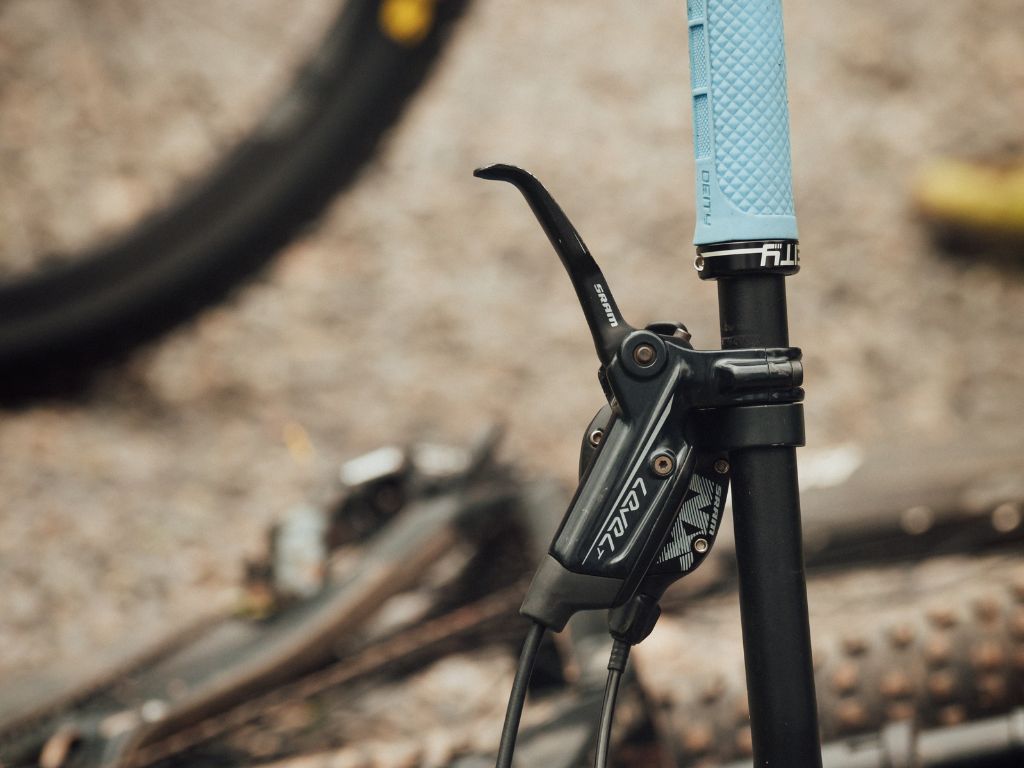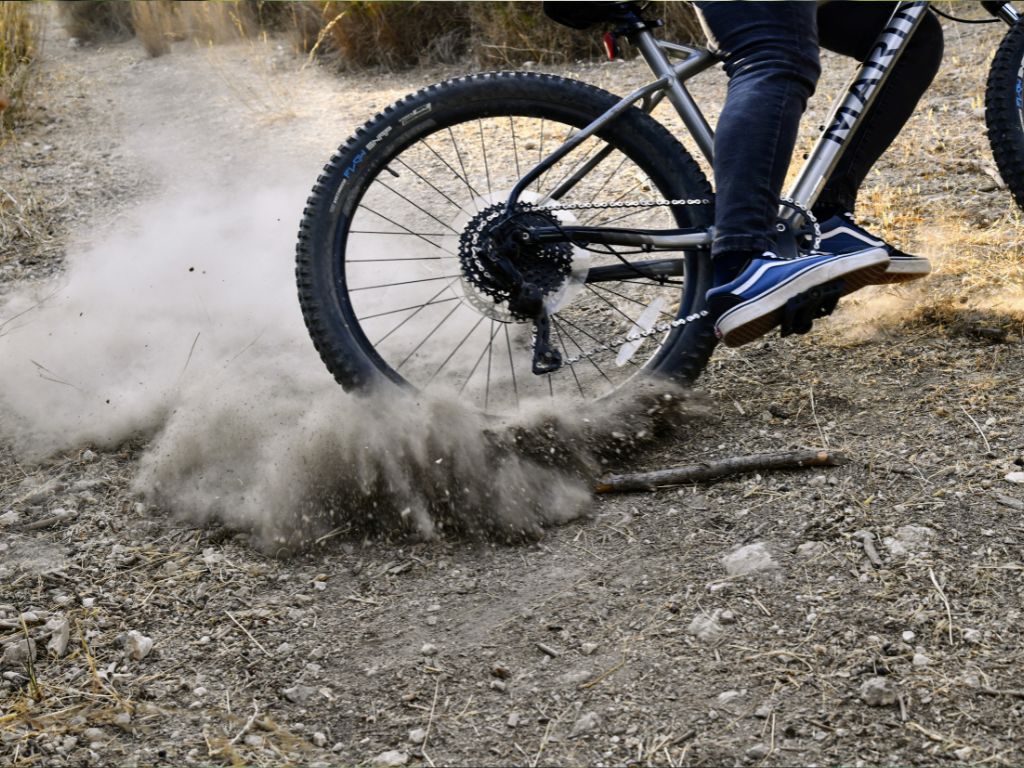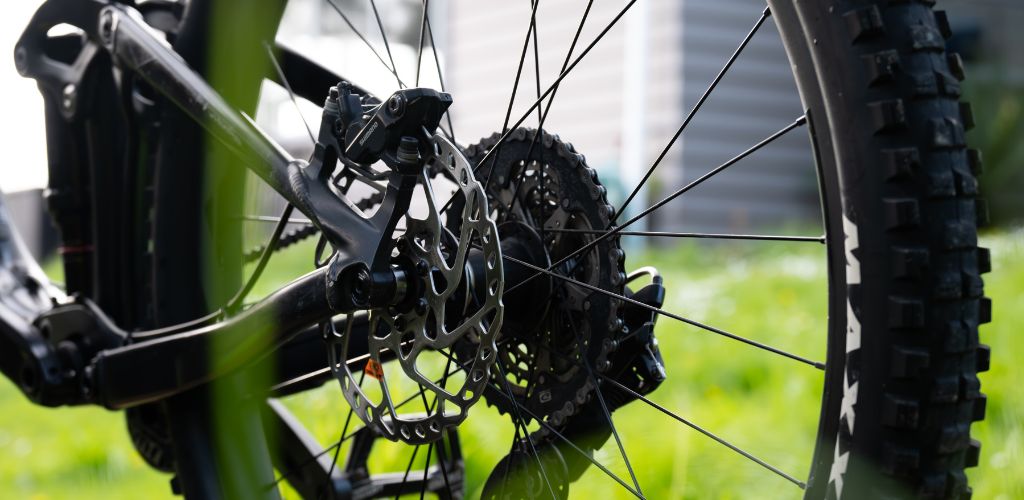If you’re reading this, you’re likely facing this exact problem – your mountain bike’s disc brakes are underperforming or have stopped working altogether.
Experiencing brake failure or reduced efficiency while out on the trails is not just frustrating, but it can also be dangerous.
The causes for disc brake issues can range from simple maintenance oversights, like dirty or worn-out brake pads, to more complex problems such as air in the hydraulic lines, misaligned rotors, or mechanical failures within the brake system.
The good news is, many of these issues can be diagnosed and fixed with a bit of know-how and the right tools.
In this article, we’ll delve into the nuances of mountain bike disc brakes – from understanding how they work and identifying common problems, to step-by-step troubleshooting techniques, maintenance tips, and guidance on when to seek professional help.
Whether you’re a seasoned rider or new to mountain biking, this guide aims to empower you with the knowledge to get your disc brakes functioning optimally again, ensuring your safety and enhancing your riding experience.
Let’s start by exploring what could be causing your brakes to fail and how to address these issues effectively.

Symptoms of Non-Functional Disc Brakes
Identifying problems early can prevent more serious issues:
Reduced Stopping Power
This could indicate worn pads, glazed pads, or air in the hydraulic lines.
Unusual Noises
Squealing or grinding noises might suggest contaminated pads or a misaligned rotor.
Spongy Brake Lever
Often a sign of air in the hydraulic system or a need for brake fluid replacement.
Visible Wear or Damage
Inspecting for worn pads, damaged rotors, or leaking fluid can help diagnose the problem.
Basic Troubleshooting
Initial Checks
- Visual Inspection: Examine brake pads for wear. Pads thinner than 1.5 mm need replacing. Check for oil or dirt on pads and rotor.
- Brake Lever Inspection: If the lever feels loose or spongy, it might indicate a problem in the hydraulic system or cable tension in mechanical systems.
- Rotor Check: Spin the wheel to see if the rotor wobbles or rubs against the pads. A warped rotor will need truing or replacing.
Common Causes and Solutions
- Worn Brake Pads
Signs: Less effective braking, metal-on-metal noise.
Solution: Measure pad thickness and replace if necessary. Ensure the correct pad type is used for your specific brake model. - Dirty or Contaminated Pads/Rotor
Signs: Poor braking performance, squealing noises.
Solution: Use isopropyl alcohol and a clean cloth to wipe the rotor. If pads are contaminated, they may need to be replaced.
- Air in Hydraulic Lines
Signs: Spongy brake lever, inconsistent braking.
Solution: Bleeding the brakes is a delicate process requiring a bleed kit specific to your brake model. Follow manufacturer guidelines.
- Rotor Misalignment or Damage
Signs: Scraping noise, uneven pad wear.
Solution: For minor bends, a rotor truing tool can be used to gently realign. Severely damaged rotors should be replaced.
Maintenance Tips
Regular Cleaning and Inspections
Clean the braking surface regularly and inspect for wear and tear. Check the tightness of caliper and rotor bolts.
Fluid Maintenance
For hydraulic systems, regularly check the fluid level and quality. Replace fluid annually or as recommended by the manufacturer.
Pad Alignment
Ensure brake pads are properly aligned to the rotor for optimal performance. Misaligned pads can cause uneven wear and poor braking.
When to Seek Professional Help
Complex Hydraulic Issues
If bleeding the brakes or adjusting the hydraulic system doesn’t resolve the issue, a professional mechanic can diagnose and fix complex hydraulic problems.
Annual Servicing
A yearly professional service can include a comprehensive check of the entire braking system, ensuring all components are in top condition.
Safety Considerations
Brakes are critical for safety. If you’re unsure about any aspect of brake maintenance or repair, it’s wise to consult a professional mechanic. They can provide valuable advice and ensure your bike is safe to ride.
Conclusion
While many issues with mountain bike disc brakes can be resolved with basic maintenance and troubleshooting, understanding when to seek professional help is crucial for safety and optimal performance. Regular care, combined with a deeper understanding of your bike’s braking system, will help keep your rides safe and enjoyable.


